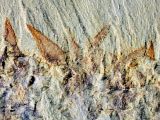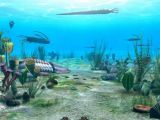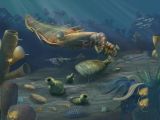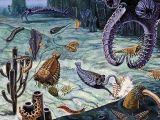A paper published in the journal Scientific Reports this December 9 announces the discovery of the fossilized remains of a rather odd ancient sea creature in present-day China. The fossilized skeletal remains, photos of which are available below, date back to the Cambrian Period.
As detailed by specialists with the University of Leicester in the UK and fellow researchers, what this means is that the species that left these fossilized body parts behind populated our planet an impressive 520 million years ago.
A freak of nature through and through
Admittedly, Earth was home to some seriously messed-up creatures during its early years. Still, this new species that was documented with the help of the fossilized remains discovered in China pretty much takes the cake (even the plate, the spoon and the table) when it comes to weirdness.
In a nutshell, evidence at hand indicates that the creature, now known as Nidelric pugio, had a balloon-like body that was almost entirely covered in spikes. Following death, the animal's body was squashed. Hence, it now looks like a bird's nest.
Paleontologists with the University of Leicester and their colleagues explain that the spikes adorning this ancient creature's body were part and parcel of an exoskeleton that served to protect the animal from other sea dwellers looking to feed on it.
Judging by the size of these spikes, it's safe to assume that the creature wasn't especially worried about becoming somebody's dinner while busy exploring aquatic ecosystems in search of a snack or a hearty dose of sweet romance.
What's interesting is that, as fierce as Nidelric pugio might have seemed, what with the dozens of spikes adorning its body, it wasn't all that impressive size-wise. In fact, paleontologists explain that an adult specimen belonging to this species measured just 9 centimeters (3.5 inches) in length.
Commenting on the discovery of this ancient sea dweller, researcher Tom Hearing said, “We usually only get the broken-up remains of ancient animal skeletons. With this specimen we can see how all the different parts of the skeleton stuck together.”
“It tells us much about how early animals functioned, how they might have interacted with other animals, and how they might have protected themselves from predators,” the specialist went on to explain.
A better understanding of biodiversity in the Cambrian Period
Paleontologists say that excavations carried out in Chengjiang County in China's Yunnan Province have until now yielded plenty of fossilized remains belonging to all sorts of creatures that populated the region 520 million years ago.
Of these fossils, many of which belong to ancient worms or crab- and lobster-like animals, some show traces of organs such as eyes, brains and even guts. Researchers hope that, by studying these skeletal remains, they will gain a better understanding of life in the Cambrian Period.
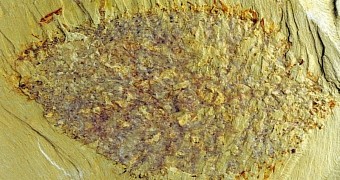
 14 DAY TRIAL //
14 DAY TRIAL // 
